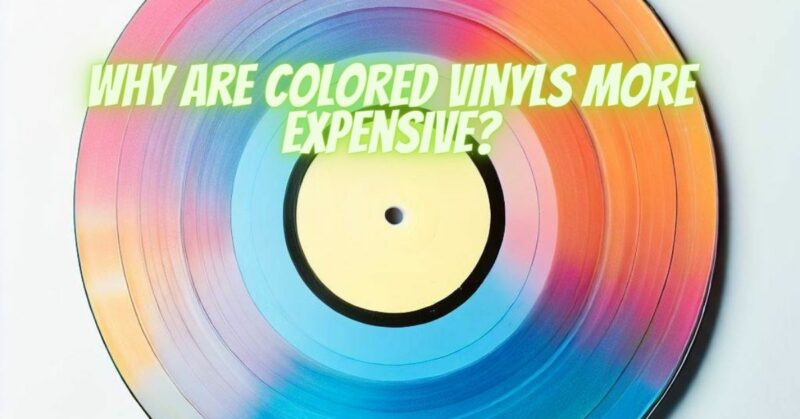Vinyl records have experienced a resurgence in popularity in recent years, and music enthusiasts are not only rediscovering the warmth and tactile appeal of vinyl but also the allure of colored vinyl records. These unique variants often come in a spectrum of hues, from translucent reds to vibrant blues. However, you may have noticed that colored vinyl records tend to be pricier than their standard black counterparts. In this article, we will explore the reasons behind the higher cost of colored vinyl records.
1. Specialized Materials:
The most apparent reason for the increased cost of colored vinyl records lies in the specialized materials used in their production. Standard black vinyl records are typically made from PVC (polyvinyl chloride) pellets, which are readily available and less expensive. In contrast, colored vinyl requires the use of pigments or dyes to achieve the desired hue, which adds to the overall production cost.
2. Smaller Batches:
Colored vinyl records are often produced in smaller batches compared to standard black vinyl. Smaller production runs are less efficient and can lead to higher manufacturing costs per unit. This limited supply can also drive up the price for collectors willing to pay a premium for unique variants.
3. Quality Control:
Maintaining quality control during the production of colored vinyl records can be more challenging. The addition of pigments or dyes introduces variables that can affect the quality of the finished product. As a result, extra steps and meticulous testing are often necessary to ensure that the colored vinyl records meet the desired audio and visual standards.
4. Unique Appeal:
The rarity and visual appeal of colored vinyl records make them desirable collector’s items. Collectors are often willing to pay more for a unique variant of a beloved album, especially if it is part of a limited edition or a special release. Record labels capitalize on this demand by pricing colored vinyl records higher.
5. Increased Manufacturing Time:
The process of producing colored vinyl records can take longer due to the additional steps involved in color mixing and quality control. This extended production time can result in increased costs associated with labor and machinery usage.
6. Artistic Value:
Many artists and labels view colored vinyl as an opportunity to express their creativity and enhance the visual aesthetic of an album. This artistic value can justify the higher cost for both creators and collectors.
7. Packaging and Presentation:
Colored vinyl records often come with unique packaging and presentation, such as specially designed sleeves, inserts, or artwork. These extras can add to the overall cost of the release.
8. Market Demand:
Market demand plays a significant role in pricing. If there is a strong demand for colored vinyl records, labels and retailers may set higher prices to capitalize on consumer interest.
While colored vinyl records may be more expensive than standard black vinyl, their unique appeal, limited availability, and artistic value make them attractive to collectors and fans. The higher cost is often justified by the added effort, materials, and creativity that go into producing these distinctive variants. Whether you’re a dedicated vinyl collector or simply appreciate the visual and auditory aesthetics of colored vinyl, their price tag is often a reflection of their special status in the world of music and vinyl culture.

